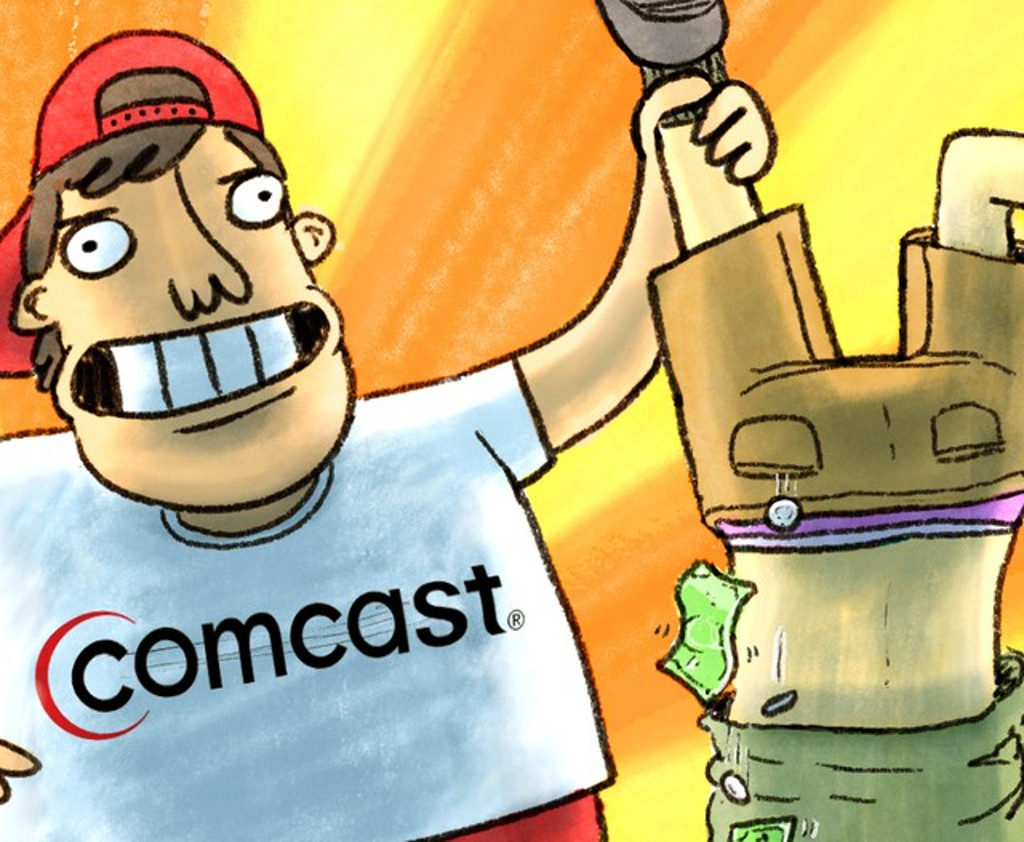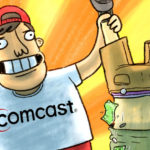As streaming video continues to chip away at cable TV subscriber numbers, Comcast is making some of its Internet speed increases available only to customers that pay for both Internet and video service.
Last week, Comcast announced speed increases for customers in Houston and the Oregon/SW Washington areas. The announcement headlines were “Comcast increases Internet speeds for some video customers.”
Customers with 60Mbps Internet download speeds are being upped to 150Mbps; 150Mbps subscribers are going to 250Mbps; and 250Mbps subscribers are getting a raise to 400Mbps or 1Gbps.
Comcast says speed increases will kick in automatically without raising the customers’ monthly bills—but only if they subscribe to certain bundles that include both Internet and TV service.
“Cord cutters are not invited to the [speed increase] party,” the Houston Chronicle wrote. “Only those who bundle Internet with cable television and other services… will see their speeds go up at no extra charge.”
Presumably, Internet-only customers can get the new speeds by paying more or by bundling their Internet subscriptions with video.
Cord cutters take a toll
Comcast lost 96,000 video customers and saw video revenue decrease 0.8 percent, “primarily due to a decline in the number of residential customers,” the company said in its latest quarterly earnings results last week.
Comcast, the nation’s largest cable company, now has 26.2 million Internet customers and 22.3 million video customers. The company keeps adding broadband subscribers while losing video subscribers.
Comcast’s net loss in video subscribers was 151,000 in calendar year 2017, according to Leichtman Research Group. Industry-wide, the top pay-TV providers representing 95 percent of the market lost 1.5 million video subscribers in 2017, nearly double the loss in 2017, Leichtman wrote.
The net subscriber loss for the top six cable companies in 2017 was 660,245, leaving the six companies with a combined 48.1 million video subscribers.
It isn’t just on-demand video services like Netflix and Amazon that are taking customers away from cable. Linear TV services delivered over the Internet like Sling TV and DirecTV Now are also surging. Sling TV added 711,000 customers in 2017 to bring its total to 2.2 million. DirecTV Now added 888,000 customers in 2017, and they weren’t just people switching from the DirecTV satellite service. DirecTV’s satellite TV lost 554,000 customers in the same period.
Using broadband to prop up TV business
Comcast frequently boasts of the speed increases it provides to customers at no extra charge. An announcement that Maine customers would get faster speeds last month said, “We’ve increased speeds 17 times in the last 17 years.”
But the speed increases have generally benefited Internet customers regardless of whether they also subscribe to TV service. Comcast offers the fastest Internet speeds in much of its 39-state territory. By making the “no-extra-charge” speed increases contingent on TV subscriber ship, Comcast is using its broadband dominance to try to prop up its declining TV business.
FURTHER READING
Tales from Comcast’s data cap nation: Can the meter be trusted?
Comcast’s increasing deployment of data caps may also help reduce the decline of the TV business. Heavy TV watchers binging on Netflix or Amazon video may repeatedly go over the 1TB monthly data cap, leaving them with a choice of paying overage fees, reducing online video watching, or subscribing to a non-streaming TV service.
We could see Comcast use its data caps more aggressively in the future. AT&T, for example, has provided unlimited data to customers who purchase both home Internet and TV service while charging overage fees to Internet-only customers who exceed their data caps. Comcast hasn’t done that yet, but it lets customers pay an extra $50 per month to remove the 1TB monthly data cap and get unlimited data.
Comcast does partner with Netflix on billing, letting it take a cut when a customer signs up for both Comcast Internet and Netflix and chooses to be billed only by Comcast. Still, Comcast takes in a lot more money when customers sign up for its cable TV service.
We asked Comcast a few questions, including whether it will make speed increases in other cities contingent on TV subscribership. A Comcast spokesperson didn’t answer, but noted, “we test and introduce new bundles all the time.” The spokesperson also said that the speed increase for Houston is the second in 2018, after one in January. The Oregon/SW Washington speed increase is apparently the first one this year.





